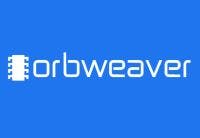Digitalization Doesn’t Mean Kissing Your Legacy Systems Goodbye
There’s a lot of talk about getting rid of legacy systems in favor of new, cloud-based software that’s available anywhere/anytime and that comes with all of the latest bells and whistles that you’d expect from a platform that was built in 2022.
In an ideal world, all organizations would be able to easily and affordably replace their aging, on-premises solutions with modern options. The reality, however, is that these initiatives are often expensive, resource-intensive and time consuming. Some implementations fail to even meet expectations—while others just fail altogether (up to 70%, in fact, by some industry estimates).
What is Legacy Software?
Defined as software that’s been in place for five years or more and that’s no longer being enhanced by its maker, legacy software runs the gamut from enterprise resource planning (ERP) to manufacturing resource planning (MRP) to procurement platforms. These aging platforms are frequently used past the point of obsolescence for a few reasons: They help companies avoid major capital outlays and productivity dips (as associates learn new platforms).
For now at least, many of these legacy platforms are chugging along just fine without any additional intervention or support. Knowing this, Orbweaver has developed solutions that allow companies to use new digital technologies without having to rip-and-replace their existing legacy systems. In fact, it even helps organizations augment and extend the lives of those systems.
“We’re seeing a big push toward digitalizing the supply chain and integrating systems, and the thought of doing that can be scary for some companies,” says Tony Powell, CTO at Orbweaver, which provides an end-to-end quoting, sales automation and data integration solution for the electronic parts industry. The company simplifies and increases productivity for employees along the supply chain by streamlining quoting, sales order intake, and customer and supplier integration.
Powell says a lot of companies jump right in and start replacing their legacy systems without realizing how much time, effort and money goes into these types of projects. Worse yet, this approach doesn’t maximize existing technology investments and, in fact, completely removes and replaces them. What they may not realize is that those ERP, MRP or other solutions are often still providing meaningful value to the business. “We’ve completed a number of digital
platform installations where existing systems remained in place and continued fulfilling their intended purposes,” says Powell. Those core functions included order processing, customer relationship management (CRM), purchase order management and AR/AP reconciliations.
“There’s no reason a company has to bear the expense of pulling those systems out and moving those functions to a new platform,” Powell continues. “They have systems that were built specifically for them and that have been functioning for years (or even decades).” Using those solutions as a foundation, Orbweaver simply bolts its systems onto those platforms using modern integrations (e.g., application programming interfaces [APIs] or cXML).
Closing the Rifts
When companies decide that their existing business systems are no longer meeting expectations, it’s common for a rift to surface between those wishing to preserve their existing legacy solutions and others who want to move in a new direction. The good news is that both sides of the argument can “win” if the company decides to move forward and adopt new technologies while also keeping their original systems in place.
Orbweaver helps further close those rifts by providing new functionalities and capabilities that weren’t previously available, but can be easily integrated with any existing ERP, MRP or other platform. “Our position is that there really doesn’t need to be any friction; both sides are inherently correct,” says Powell.
With a core digital platform known as a Data Hub, Orbweaver offers a standalone system that can translate data from one system to the next without any heavy lifting. The company that wants to pull data from its existing ERP and deliver it to the members of its sales team in real-time, for example, can use the Data Hub to do that without having to replace that ERP.
Keeping Supply Chains Running
A universal translator for computer systems, the Data Hub can take an API and render it as electronic data interchange (EDI). It can also extract data from a spreadsheet and make that information available in an API. And, it can take data from an API and make that available in a spreadsheet. Once in place, the Data Hub allows companies to maximize the life of their legacy solutions, leverage digital technologies and operate in real-time—a definite “must” in today’s supply chain management environment.
The electronics component distributor that relies on data that’s three to four weeks old is probably canceling a lot of purchase orders right now, dealing with incorrect inventory counts and putting out other inventory fires on a daily basis.
When that information is available in real-time and supported by a digitalized legacy system, companies can give their customers accurate availability for purchase orders, lead times and quantities on hand. This creates a win-win for everyone involved and keeps supply chains running as smoothly as possible in any business conditions.









